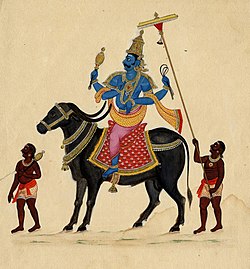
Thiruvalluvar, commonly known as Valluvar, was an Indian poet and philosopher. He is best known as the author of the Tirukkuṟaḷ, a collection of couplets on ethics, political and economical matters, and love. The text is considered an exceptional and widely cherished work of Tamil literature.

Cilappatikāram, also referred to as Silappathikaram or Silappatikaram, is the earliest Tamil epic. It is a poem of 5,730 lines in almost entirely akaval (aciriyam) meter. The epic is a tragic love story of an ordinary couple, Kannaki and her husband Kovalan. The Cilappathikaram has more ancient roots in the Tamil bardic tradition, as Kannaki and other characters of the story are mentioned or alluded to in the Sangam literature such as in the Naṟṟiṇai and later texts such as the Kovalam Katai. It is attributed to a prince-turned-monk Iḷaṅkõ Aṭikaḷ, and was probably composed in the 5th or 6th century CE.

Tolkāppiyam, also romanised as Tholkaappiyam, is the most ancient extant Tamil grammar text and the oldest extant long work of Tamil literature. It is the earliest Tamil text mentioning Gods often identified as Hindu deities. Mayyon as, Seyyon as (Skandha), Vendhan as (Indra), Varuna as (Varuna) and Kotṟavai as are the gods mentioned. The surviving manuscripts of the Tolkappiyam consists of three books (atikaram), each with nine chapters (iyal), with a cumulative total of 1,610 (483+463+664) sutras in the nūṛpā meter. It is a comprehensive text on grammar, and includes sutras on orthography, phonology, etymology, morphology, semantics, prosody, sentence structure and the significance of context in language.

Sambandar, also referred to as Tirugnana Sambandar, Tirujnanasambanda, Campantar or Jñāṉacampantar, was a Shaiva poet-saint of Tamil Nadu who lived sometime in the 7th century CE. He was a child prodigy who lived just 16 years. According to the Tamil Shaiva tradition, he composed an oeuvre of 16,000 hymns in complex meters, of which 383 (384) hymns with 4,181 stanzas have survived. These narrate an intense loving devotion (bhakti) to the Hindu god Shiva. The surviving compositions of Sambandar are preserved in the first three volumes of the Tirumurai, and provide a part of the philosophical foundation of Shaiva Siddhanta.
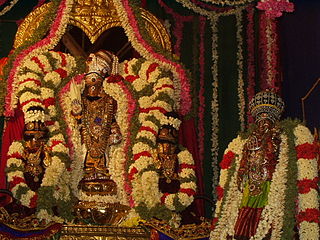
Perumal or Tirumal is a Hindu deity. Perumal is worshipped mainly among Tamil Hindus in South India, Sri Lanka, and the Tamil diaspora, who consider Perumal to be a form of Vishnu.

The Purananuru, sometimes called Puram or Purappattu, is a classical Tamil poetic work and traditionally the last of the Eight Anthologies (Ettuthokai) in the Sangam literature. It is a collection of 400 heroic poems about kings, wars and public life, of which two are lost and a few have survived into the modern age in fragments. The collected poems were composed by 157 poets, of which 14 are anonymous and at least 10 were women. This anthology has been variously dated between 1st century BCE and 5th century CE, with Kamil Zvelebil, a Tamil literature scholar, dating predominantly all of the poems of Purananuru sometime between 2nd and 5th century CE. Nevertheless, few poems are dated to the period of 1st century BCE.

The Sangam literature historically known as 'the poetry of the noble ones' connotes the ancient Tamil literature and is the earliest known literature of South India. The Tamil tradition and legends link it to three literary gatherings around Madurai and Kapāṭapuram : the first over 4,440 years, the second over 3,700 years, and the third over 1,850 years before the start of the common era. Scholars consider this Tamil tradition-based chronology as ahistorical and mythical. Most scholars suggest the historical Sangam literature era spanned from c. 300 BCE to 300 CE, while others variously place this early classical Tamil literature period a bit later and more narrowly but all before 300 CE. According to Kamil Zvelebil, a Tamil literature and history scholar, the most acceptable range for the Sangam literature is 100 BCE to 250 CE, based on the linguistic, prosodic and quasi-historic allusions within the texts and the colophons.
The Eight Anthologies, known as Eṭṭuttokai or "Eight Collections" in the literature, is a classical Tamil poetic work that forms part of the Eighteen Greater Texts (Patiṉeṇmēlkaṇakku) anthology series of the Sangam Literature. The Eight Anthologies and its companion anthology, the Ten Idylls (Pattuppāṭṭu), is the oldest available Tamil literature. According to Kamil Zvelebil, a scholar of Tamil literature and history, dating these Eight Anthologies or their relative chronology is difficult, but the scholarship so far suggested that the earliest layers were composed sometime between the 1st century BCE and 2nd century CE, while the last layers were completed between 3rd and 5th century CE.
Kuṟuntokai is a classical Tamil poetic work and traditionally the second of the Eight Anthologies (Ettuthokai) in the Sangam literature. The collection belongs to the akam (love) category, and each poem consists of 4 to 8 lines each. The Sangam literature structure suggests that the original compilation had 400 poems, but the surviving Kuruntokai manuscripts have 402 poems. According to Takanobu Takahashi – a Tamil literature scholar, these poems were likely composed between 100 CE and 300 CE based on the linguistics, style and dating of the authors. Kamil Zvelebil, a Tamil literature and history scholar, states that the majority of the poems in the Kuruntokai were likely composed between the 1st century BCE and the 2nd century CE. The Kuruntokai manuscript colophon states that it was compiled by Purikko (உரை), however nothing is known about this compiler or the patron.

The Paripādal is a classical Tamil poetic work and traditionally the fifth of the Eight Anthologies (Ettuthokai) in the Sangam literature. According to Tolkappiyam, Paripadal is a kind of verse dealing only with love (akapporul) and does not fall under the general classification of verses. It has a minimum of 25 lines and a maximum of 400 lines. It is an "akam genre", odd and hybrid collection which expresses love in the form of religious devotion (Bhakti) to gods and goddesses predominently to Maha Vishnu and Murugan. According to Kamil Zvelebil, a Tamil literature and history scholar. This is the only anthology in the Eight Anthologies collection that is predominantly religious, though the other seven anthologies do contain occasional mentions and allusions to gods, goddesses and legends.

The Patiṟṟuppattu is a classical Tamil poetic work and one of the Eight Anthologies (Ettuthokai) in Sangam literature. A panegyric collection, it contains puram poems. The Chera kings, known as the Cheramal, are the centre of the work. Its invocatory poem is about Maayon, or Perumal (deity) (Vishnu).

Tirumurukātṟuppadai is an ancient intensely devotional Tamil poem in the Sangam literature genre entirely dedicated to the god Murugan. Murugan is described as the nephew of the god Vishnu, who is called Mayon or the ruler of the worlds. Authored by Nakkiranar, it is the first poem in the Ten Idylls (Pattuppāṭṭu) anthology. The poem is generally dated to the late classical period, with some scholars suggesting it may have been composed a few centuries later.
Maduraikanchi, is an ancient Tamil poem in the Sangam literature. It is a didactic poem and its title connotes the "poetic counsel addressed to the king of Madurai". Composed by Mankuti Marutanar – probably the chief court poet of the Pandya king Nedunjeliyan II, the Maduraikkāñci is the sixth poem in the Pattuppāṭṭu anthology. The poem is generally dated to the late classical period.

Perumpāṇāṟṟuppaṭai is an ancient Tamil poem in the Pattuppattu anthology of the Sangam literature. It contains 500 lines in the akaval meter. It is one of five arruppatai genre poems and was a guide to other bards seeking a patron for their art. Set as a praise for chieftain Tonataiman Ilantiraiyan of the Kanchi territory, it was composed by Uruttirankannanar sometime around 190–200 CE, states Kamil Zvelebil – a Tamil literature scholar. While the poem is from the 2nd century, it was likely added to the Pattuppāṭṭu anthology in the 4th or 5th century CE, states Dennis Hudson – an Indologist and World Religions scholar. The poem has Several Mentions Of Vishnu and his temples present in Kanchipuram, It also refers Lord Vishnu as the supreme god of the world and Brahma was born from the navel of Maha Vishnu.
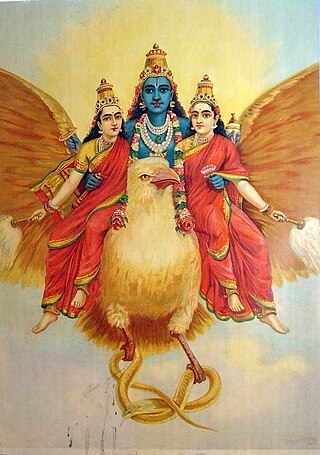
Mullaippāṭṭu is an ancient Tamil poem in the Sangam literature. It is largely an akam-genre (love) poem about a wife in grief worshiping Maha Vishnu when her husband does not return from the war front, when he promised he will. Authored by Napputanar, it is the shortest poem in the Ten Idylls (Pattuppāṭṭu) anthology, consisting of 103 lines in akaval meter. The Mullaippattu weaves her sorrow with her attempts at patience and self-control. The poem was likely composed about 230 CE or slightly later, according to Kamil Zvelebil – a Tamil literature scholar. The short poem mentions the Hindu god Vishnu through an elaborate simile. It also mentions the goddess of wealth, Lakshmi in lines 6–7, to whom the women pray for the return of the warriors. Lines 46–47 of Mullaippattu mentions to Vaishnava Brahmin yogis in ochre-colored clothes carrying three staves (Tridanda) and were prominent during the period.

Paṭṭiṉappālai is a Tamil poem in the ancient Sangam literature. It contains 301 lines, of which 296 lines are about the port city of Kaveripoompattinam, the early Chola kingdom and the Chola king Karikalan. The remaining 5 lines are on the proposed separation by a man who wants to move there and the separation pain of his wife who would miss her husband's love. Of the 301 lines, 153 are in the vanci meter and the rest are in akaval. It is sometimes referred to as Vancinetumpattu, or the "long song in the vanci meter". The poem was composed by Katiyalur Uruttirankannanar, sometime around 1st century and 2nd century CE, states Kamil Zvelebil – a Tamil literature scholar. There are mentions of Mahalakshmi painted on walls and considered her as the goddess of fortune and wealth. The poem explains that the high and strong walls of the city secure the king where Mahalakshmi sits enthroned. There are mentions in Paṭṭiṉappālai that many Tamilians worshiped tall pillars or posts as Mayon (Vishnu). There are Many mentions of Maha Vishnu throughout the poem. There are temples present even now, where Maha Vishnu is worshiped in a pillar form. A well none example is the Kaliyuga Varadaraja Perumal Temple. It mentions the worship of Maha Vishnu, Mahalakshmi and Murugan. Muruga was worshiped as the red god and the god of war.
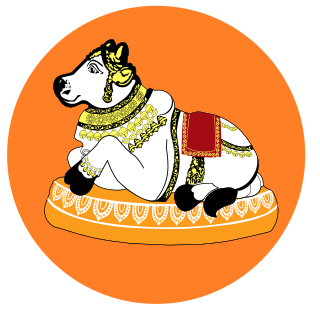
The Tevaram, also spelled Thevaram, denotes the first seven volumes of the twelve-volume collection Tirumurai, a Śaiva narrative of epic and Puranic heroes, as well as a hagiographic account of early Saiva saints set in devotional poetry. The Tevaram volumes contain the works of the three most prominent Saiva Tamil poets of the 7th and 8th centuries: Sambandar, Appar, and Sundarar. The three poets were not only involved in portraying their personal devotion to Shiva, but also engaged a community of believers through their songs. Their work is an important source for understanding the Śaiva Bhakti movement in the early medieval South India.
A Yūpa (यूप), or Yūpastambha, is a Vedic sacrificial pillar or a form of Vedic altar used in Ancient India. It is one of the most important elements in Vedic ritual and Yajnas mentioned in the Atharvana Veda Samhita. Several Vedic sacrifices and Yajnas were taken place with the Yupa-Stambha. It is one of the most important elements of the Vedic ritual. The execution of a victim, who was tied at the Yūpa, was meant to bring prosperity to everyone.
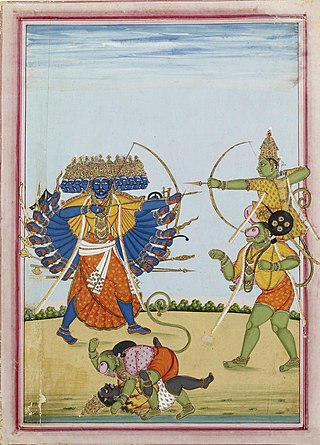
Ramayana is one of the ancient Indian epics. Ramayana is traditionally considered to be 7000 year old. But, According to Robert P. Goldman, the oldest parts of the Ramayana date to the mid-8th century BCE. The story is narrated by the saint poet Valmiki and tells the tale of a North Indian Prince Rama of the city of Ayodhya, who is banished into the forest along with his wife Sita and brother Lakshmana. During the exile, Sita gets kidnapped by the king Ravanan of Lanka, and Rama with the help of a Vanara army rescues Sita from Lanka. The original set in Sanskrit consists of 24,000 verses, and there are several variations in the story narrated in South Asian and South East Asian cultures, across the Indian subcontinent, Thailand and Indonesia, with several versions re-written in various Indian and other Asian languages.

Vaishnavism in Ancient Tamilakam is one of the major Hindu denominations. It is also called Perumalium since it considers Perumal as the sole supreme being leading all other Hindu deities, i.e. Mahavishnu. Its followers are called Vaishnavites or Vaishnavas, and it includes sub-sects like Krishnaism and Ramaism, which consider Krishna and Rama as the supreme beings respectively. According to a 2010 estimate by Johnson and Grim, Vaishnavism is the largest Hindu sect, constituting about 641 million or 67.6% of Hindus. Vaishnavism in Tamil Nadu finds its earliest literary mention in the Sangam literature dated to the 5th century BCE. Maha Vishnu or Perumal is considered as the most mentioned god in the Sangam Literature. Some of the earliest known mentions of Perumal, and the Tamil devotional poems ascribed to him, are found in Paripāṭal – the Sangam era poetic anthology. He is a popular Hindu deity particularly among Tamils in Tamil Nadu and the Tamil diaspora, and in Vaishnava temples. One of the richest and largest Hindu temples complexes dedicated to Perumal in South India.






